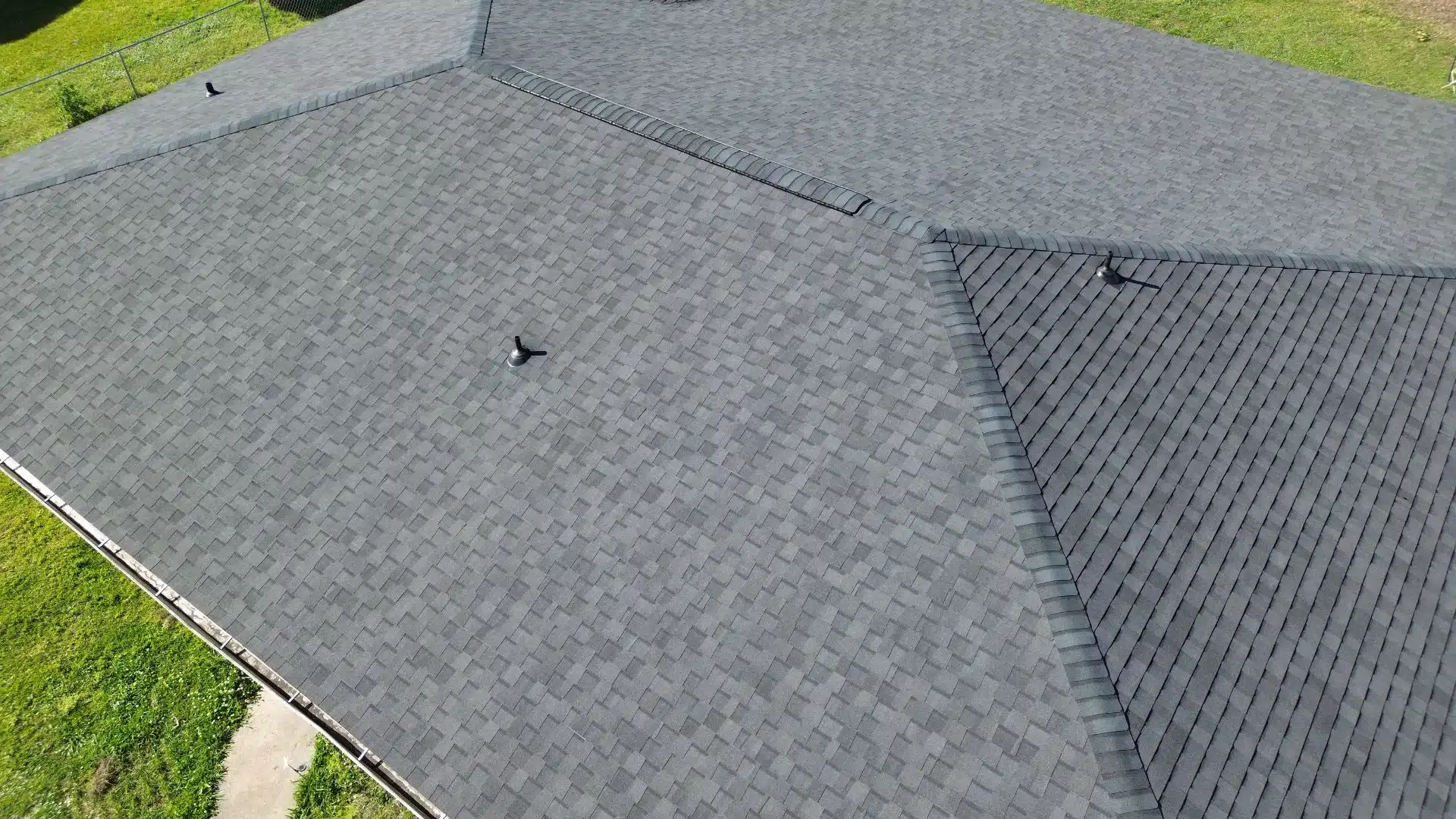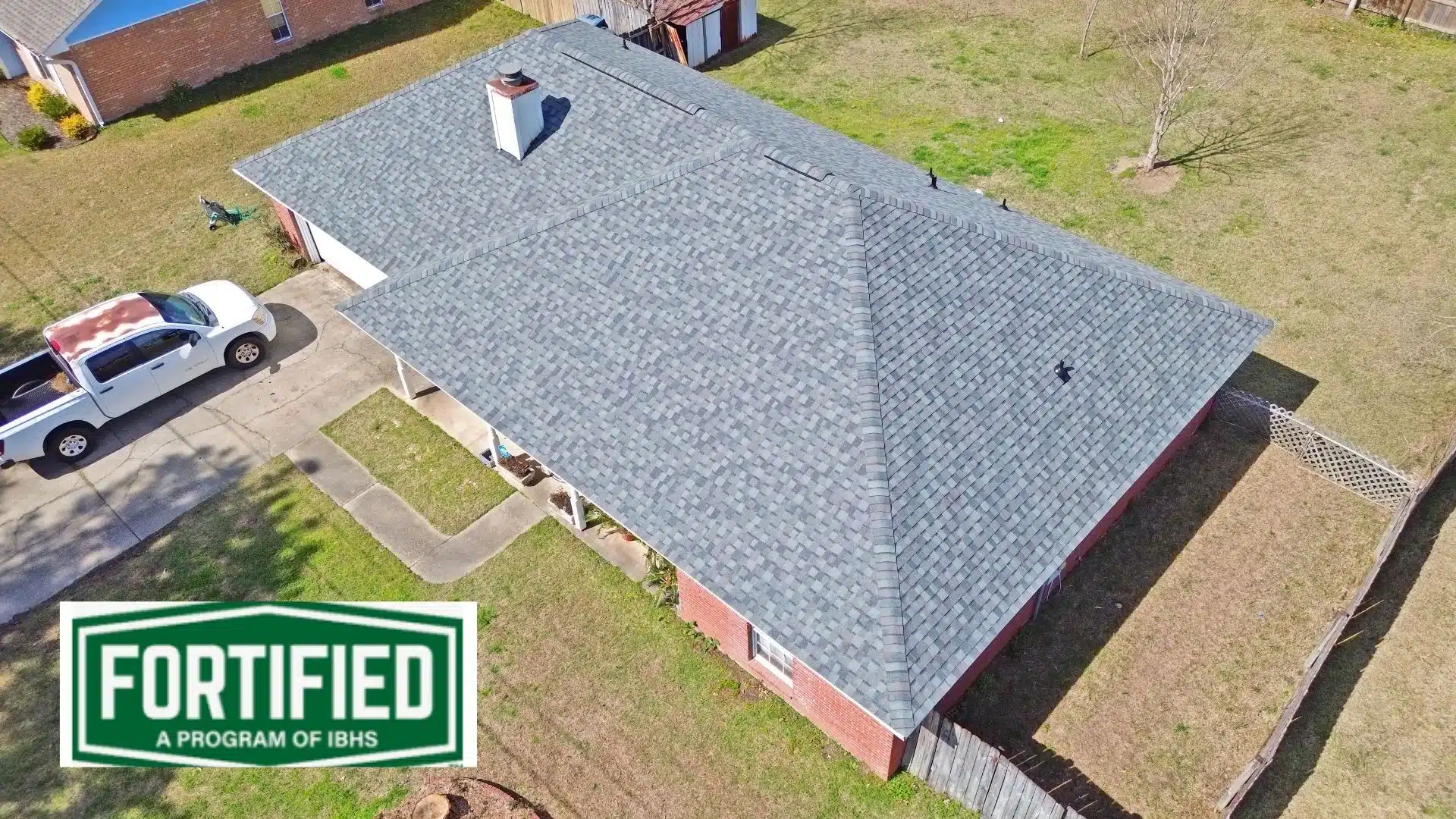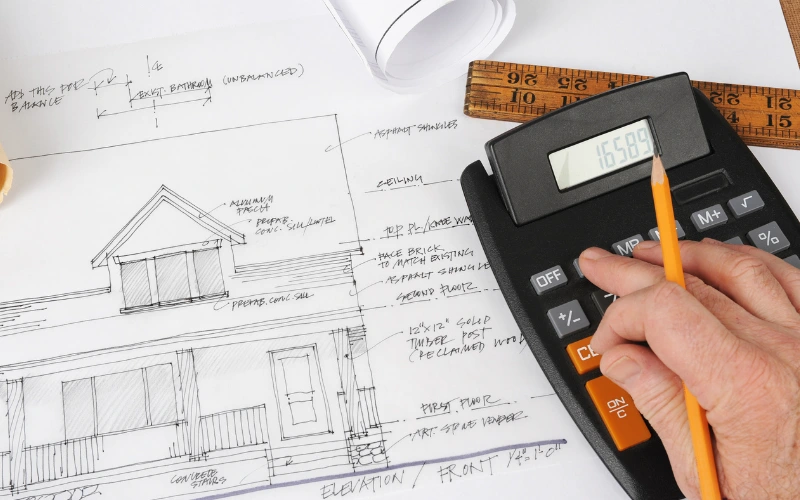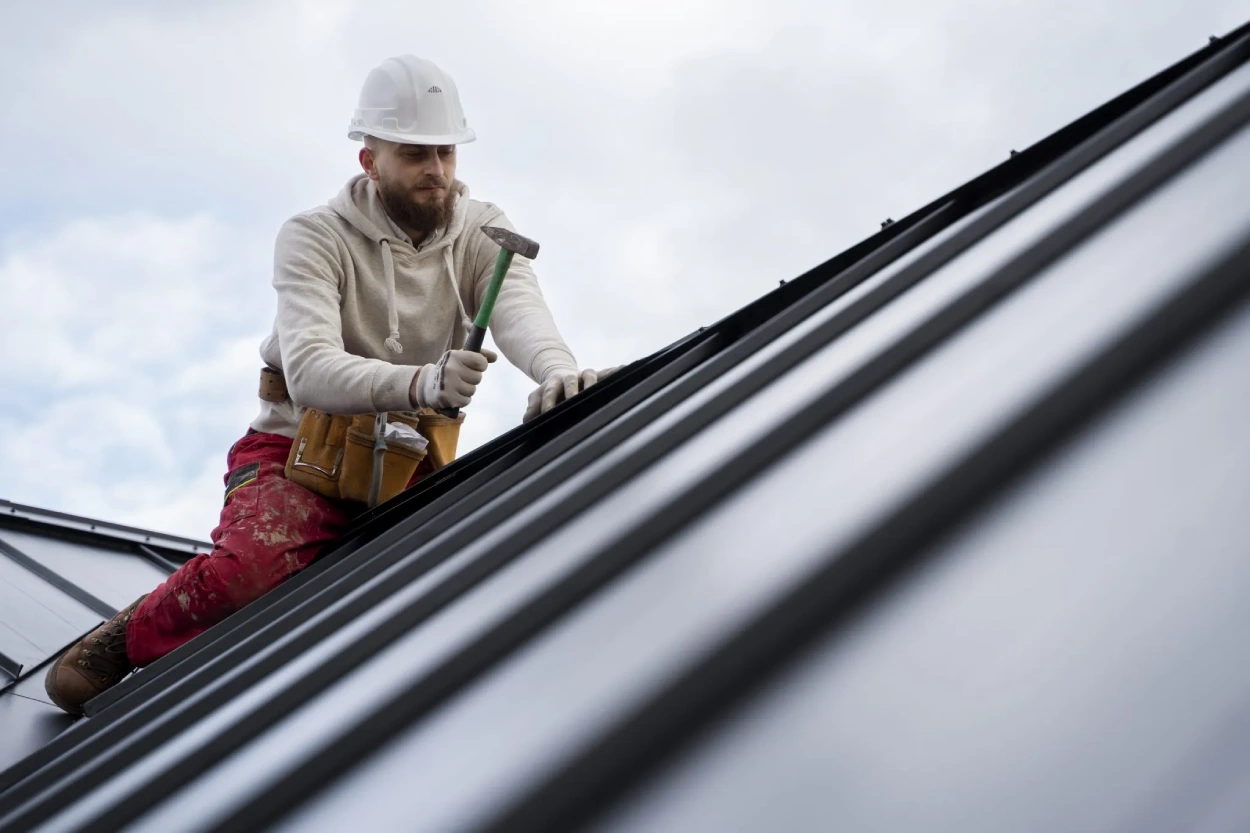When it comes to protecting your home, the roof is your first line of defense against the elements. But what if you could take that defense to the next level? Enter the concept of a Fortified Roof. This specialized roofing system is designed to withstand the harshest weather conditions, offering peace of mind for homeowners, especially those in areas vulnerable to severe weather events like hurricanes, tropical storms, and high winds. But with such added protection comes a hefty price tag. So, the question arises: Is a Fortified Roof worth the investment?
Is a Fortified Roof worth it? For homeowners in high-risk areas, this decision is not just about the upfront cost, but about long-term protection, cost savings, and peace of mind. In this blog, we’ll explore the benefits, the construction standards, and how a Fortified Roof can offer you enhanced protection against extreme weather.
1. What is a Fortified Roof?
A Fortified Roof in Gulfport MS is not your average roofing system. It is specifically engineered to meet high construction standards, designed to offer superior protection against severe weather conditions, such as hurricanes, high winds, and hailstorms. Unlike standard roofs, Fortified Roofs use reinforced materials and construction methods that exceed regular building codes, making them far more resistant to damage and deterioration.
Definition:
In essence, a Fortified Roof refers to a roofing system that has been upgraded to withstand extreme weather conditions. This could mean using stronger, more durable materials like impact-resistant shingles, or adding extra layers of protection to ensure the roof remains intact during high winds or heavy storms. The goal is to ensure that your home remains safe, dry, and secure, no matter the weather outside.
Construction Standards:
Fortified Roofs are built to strict construction standards that far surpass those of standard roofs. They typically include:
- Impact-Resistant Materials: These roofs often feature materials such as impact-resistant shingles or metal roofing, designed to stand up to the most severe weather events.
- Wind-Resistant Features: Fortified Roofs are designed to resist winds that could easily destroy a standard roof. This includes enhanced roof anchoring systems and the use of stronger adhesives.
- Advanced Ventilation and Insulation: Proper ventilation and insulation are key to the longevity of a Fortified Roof. This not only ensures durability but also improves energy efficiency, helping to maintain a comfortable temperature inside the home.
2. Enhanced Roof Protection Against Extreme Weather
One of the most compelling reasons homeowners opt for a Fortified Roof is the enhanced protection it provides during extreme weather events. In regions that experience frequent hurricanes, tropical storms, or other severe weather, this added layer of security can be invaluable.
Severe Weather Resistance:
Fortified Roofs are specifically engineered to resist the devastating effects of high winds, including those experienced during hurricanes and tropical storms. These roofs are designed to withstand winds that can exceed 130 mph, which is typically the threshold for hurricane-force winds. With a Fortified Roof, you can rest assured knowing your home has a far better chance of surviving a storm without significant damage to the roof structure.
Protection from Hail and Debris:
In addition to wind resistance, Fortified Roofs are built to handle the impact of hailstones and flying debris. During severe weather events, these elements can cause significant damage to a traditional roof, leading to leaks, water damage, and structural issues. Fortified Roofs, however, are built to withstand impacts from large hailstones, reducing the likelihood of punctures, cracks, or other forms of damage. This durability ensures that your roof remains intact, preventing leaks and water intrusion, which can otherwise lead to costly repairs.
Long-Term Safety:
With a Fortified Roof, you’re not only investing in immediate protection but also in long-term safety. During severe weather events, the roof is the first barrier between your home and the destructive forces of nature. The added reinforcement means that your home is less likely to suffer the kind of catastrophic damage that could result in expensive repairs or even total loss. This level of protection provides invaluable peace of mind, especially in areas where storms and extreme weather are a common occurrence.
3. Cost Savings Over Time
While the initial investment in a Fortified Roof can be higher than a standard roof, the long-term savings it offers make it a worthwhile financial decision. Below are the key cost-saving benefits that homeowners can enjoy over time:
Insurance Discounts:
One of the most immediate financial benefits of installing a Fortified Roof is the potential for insurance savings. Many insurance companies offer significant discounts on premiums for homes with Fortified Roofs. In some cases, homeowners can save up to 30% on their insurance costs. This is because insurers recognize that homes with Fortified Roofs are less likely to suffer damage in severe weather events, reducing the risk of costly claims. Over time, these savings can add up, helping to offset the higher upfront cost of installation.
Reduced Maintenance:
A Fortified Roof’s durability means fewer repairs and less frequent maintenance. Standard roofs often require ongoing upkeep, including patching leaks, replacing damaged shingles, or repairing structural issues caused by extreme weather. In contrast, Fortified Roofs are designed to withstand harsher conditions, which significantly reduces the need for these types of repairs. Fewer repairs mean less money spent on maintenance, allowing homeowners to save in the long run. This reduced upkeep also contributes to the overall cost-effectiveness of choosing a Fortified Roof.
Energy Efficiency:
Fortified Roofs in Gulfport MS are not only strong and durable but also energy-efficient. Many Fortified Roofs include additional insulation and ventilation features that help regulate the temperature inside the home. This insulation helps to maintain a consistent indoor temperature, reducing the workload on heating and cooling systems. As a result, homeowners can expect lower energy bills, as their HVAC system won’t have to work as hard to keep the home comfortable. The energy savings can be substantial over time, making the Fortified Roof a smart choice for long-term financial benefits.
4. Increased Property Value
Beyond protection and savings, a Fortified Roof can also significantly increase the value of your home, making it a strong investment for homeowners who are considering long-term financial growth.
Appreciation in Home Value:
Homes with Fortified Roofs have been shown to appreciate at a higher rate compared to those with standard roofs. Studies have found that the addition of a Fortified Roof can lead to an increase in property value ranging from 2% to 8.4%. For instance, research conducted by the Mississippi-Alabama Sea Grant Consortium and Mississippi State University suggests that homes with Fortified Roofs are perceived as more valuable due to their enhanced protection against extreme weather events. This increase in value can be an appealing factor for homeowners looking to sell their property in the future.
Impact on Resale Value:
For homeowners considering selling their property down the road, a Fortified Roof can be a significant selling point. Potential buyers may be willing to pay more for a home that offers enhanced protection and lower insurance premiums, knowing they won’t have to worry about the potential costs associated with roof damage after severe weather. In areas that frequently experience hurricanes, storms, or other extreme weather, having a Fortified Roof can make your property stand out in a competitive real estate market. This added value makes the investment in a Fortified Roof not just a protective measure but also a strategic decision that can yield a higher return when selling your home.
By offering substantial savings on insurance, reducing the need for repairs, enhancing energy efficiency, and increasing property value, a Fortified Roof proves itself to be a smart investment that goes beyond initial protection. These long-term financial benefits make it an option that many homeowners in high-risk areas find appealing.
5. Long-Term Investment Potential
Investing in a Fortified Roof is a decision that requires considering both the upfront costs and the long-term financial benefits. While the initial price can seem high, the durability, savings, and protection it offers can provide significant value over time.
Initial Costs vs. Long-Term Gains:
The cost of installing a Fortified Roof typically ranges between $7,000 and $15,000, depending on the size of the home and the complexity of the installation. While this might seem like a large upfront investment, the return on investment becomes evident over time. The long-term gains come in the form of insurance discounts, reduced maintenance costs, lower energy bills, and increased property value.
Most homeowners can expect to recoup the cost of their Fortified Roof over the span of 5 to 25 years, depending on the local weather risks and the lifespan of the roofing materials. For instance, homeowners in areas frequently impacted by hurricanes or severe storms may experience a quicker return on investment due to fewer repair needs and insurance discounts, while those in lower-risk areas may take a bit longer to break even.
Example Calculation:
Let’s consider a 2,000-square-foot home with a typical installation cost for a Fortified Roof of $10,000. Over a 10-year period, the homeowner may save approximately:
- $300/year in insurance premiums (assuming a 30% discount).
- $200/year in energy savings from improved insulation and ventilation.
- $100/year in reduced maintenance costs (fewer repairs, fewer replacement materials).
This would result in approximately $600 in annual savings. Over 10 years, the homeowner would save $6,000, covering a significant portion of the roof’s installation cost. With continued savings over the following years, the total return on investment would increase, making the roof’s installation cost more than worth it in the long run.
6. Peace of Mind and Security
In addition to the financial benefits, a Fortified Roof provides an invaluable sense of security and peace of mind, especially for homeowners in areas prone to severe weather events. The emotional and psychological benefits are often overlooked but are key considerations when making such an important decision.
Emotional Benefits:
The most immediate emotional benefit of having a Fortified Roof is the peace of mind that comes with knowing your home is significantly more secure during a storm. For homeowners in areas frequently impacted by hurricanes, tropical storms, or hailstorms, this added layer of protection offers a sense of security that cannot be easily quantified. Knowing that your home has the best possible protection against severe weather can alleviate the stress and anxiety that often accompany storm season.
Psychological Value:
The psychological reassurance that comes with having a Fortified Roof is particularly valuable for those living in high-risk weather zones. Homeowners can sleep easier knowing that their home is better equipped to withstand extreme conditions, reducing the fear of catastrophic damage. This sense of security is especially important for families, as it not only protects the structure of the home but also offers a level of comfort in knowing that the people inside are better shielded from harm. In areas where severe storms are common, the Fortified Roof becomes more than just a physical barrier—it becomes an emotional safeguard that enhances the homeowner’s quality of life.
In essence, while the financial benefits of a Fortified Roof are clear, the emotional and psychological peace of mind it offers makes it a well-rounded investment. This combination of long-term financial gains and heightened security is what makes the Fortified Roof a truly worthwhile investment for many homeowners.
7. Considerations Before Investing
Before deciding whether a Fortified Roof is the right investment for your home, it’s essential to evaluate the cost-benefit ratio, especially in relation to your specific location and circumstances. While the protection, savings, and long-term gains are significant, there are factors that may influence how quickly you recoup the investment.
Cost-Benefit Ratio:
For homeowners in lower-risk areas, the investment in a Fortified Roof may take longer to break even. If your home is not in a region prone to frequent severe weather events such as hurricanes or major storms, the financial return from insurance discounts, energy savings, and reduced maintenance costs will accumulate more slowly. In these cases, it could take upwards of 20 to 25 years to fully recoup the cost of installation. However, even in these areas, the long-term protection and peace of mind still hold value, especially as climate conditions become more unpredictable and extreme weather events more frequent.
Factors Affecting Recoupment:
Several factors can influence how quickly you can recoup your investment in a Fortified Roof:
- Location: The severity and frequency of weather events in your region play a significant role in how quickly you’ll see a return on your investment. Homeowners in hurricane-prone areas, for example, will likely recoup their investment much sooner due to frequent storms and insurance discounts.
- Home Value: The value of your home also affects the financial impact of a Fortified Roof. Homes in higher-value markets tend to see a greater increase in property value after installing a Fortified Roof, making it a more attractive investment. Conversely, lower-value homes may not see the same level of appreciation, although the increased protection and potential insurance savings still make it worthwhile.
- Length of Stay: The longer you plan to stay in your home, the more likely you are to fully benefit from the investment. If you’re planning to sell the home in the near future, you may not realize the full financial benefits, especially if you don’t live in a high-risk area. On the other hand, if you plan to stay for several decades, the long-term savings and increased property value can make the investment more worthwhile.
8. Conclusion: Is It Worth It?
A Fortified Roof offers undeniable advantages in terms of superior protection, cost savings, increased property value, and peace of mind. Whether you’re concerned about future insurance costs, worried about the potential for severe weather damage, or looking to increase the resale value of your home, a Fortified Roof can deliver substantial benefits.
However, the upfront costs of installing a Fortified Roof can be significant. For homeowners in low-risk areas, it may take many years to break even on the investment, and the return may not always be as immediate. Yet, for those in high-risk weather zones such as the MS Gulf Coast, the protection and savings can be substantial and well worth the investment.
Ultimately, whether a Fortified Roof is worth it depends on your personal circumstances—your location, home value, and how long you plan to stay in your home. If you live in an area prone to severe storms or hurricanes, the decision is easier. For those in less vulnerable regions, a Fortified Roof can still provide valuable protection, but it’s important to weigh the costs and benefits in light of your specific situation.
Before making a decision, we encourage you to consult with roofing contractors in Gulfport MS like Integrity Roofing and insurance agents to explore Fortified Roofing options that are specifically suited to your home and region. They can help you assess the potential savings, provide you with more detailed cost estimates, and guide you toward the best roofing solution for your unique needs. Take the time to make an informed decision that will protect your home and offer lasting peace of mind.
Frequently Asked Questions (FAQ)
1. What is a Fortified Roof, and how is it different from a standard roof?
A Fortified Roof is designed to withstand extreme weather conditions like hurricanes, high winds, and hail. Unlike standard roofs, which meet basic building codes, Fortified Roofs exceed these standards by using impact-resistant materials, enhanced anchoring systems, and better insulation to provide superior protection.
2. How much does a Fortified Roof cost?
The installation cost of a Fortified Roof typically ranges between $7,000 and $15,000, depending on the size of your home and the complexity of the installation. While it is a significant upfront investment, the long-term savings and added protection often make it worthwhile.
3. Can I save money on my insurance with a Fortified Roof?
Yes, many insurance companies offer premium discounts for homes with Fortified Roofs. These discounts can be as high as 30%, as insurers recognize that Fortified Roofs are more resilient against storm damage, reducing the risk of costly claims.
4. How long will it take to recoup the investment in a Fortified Roof?
The time it takes to recoup the investment in a Fortified Roof depends on several factors, such as your location, the value of your home, and how long you plan to stay in your home. Homeowners in high-risk weather areas may break even in as little as five years, while those in lower-risk zones might take 20 to 25 years.
5. Are there any emotional benefits to installing a Fortified Roof?
Absolutely. Having a Fortified Roof provides homeowners with peace of mind, knowing their home is better protected during severe weather. This added security can help alleviate the stress and anxiety often associated with storms, offering reassurance, especially in regions prone to extreme weather events.




